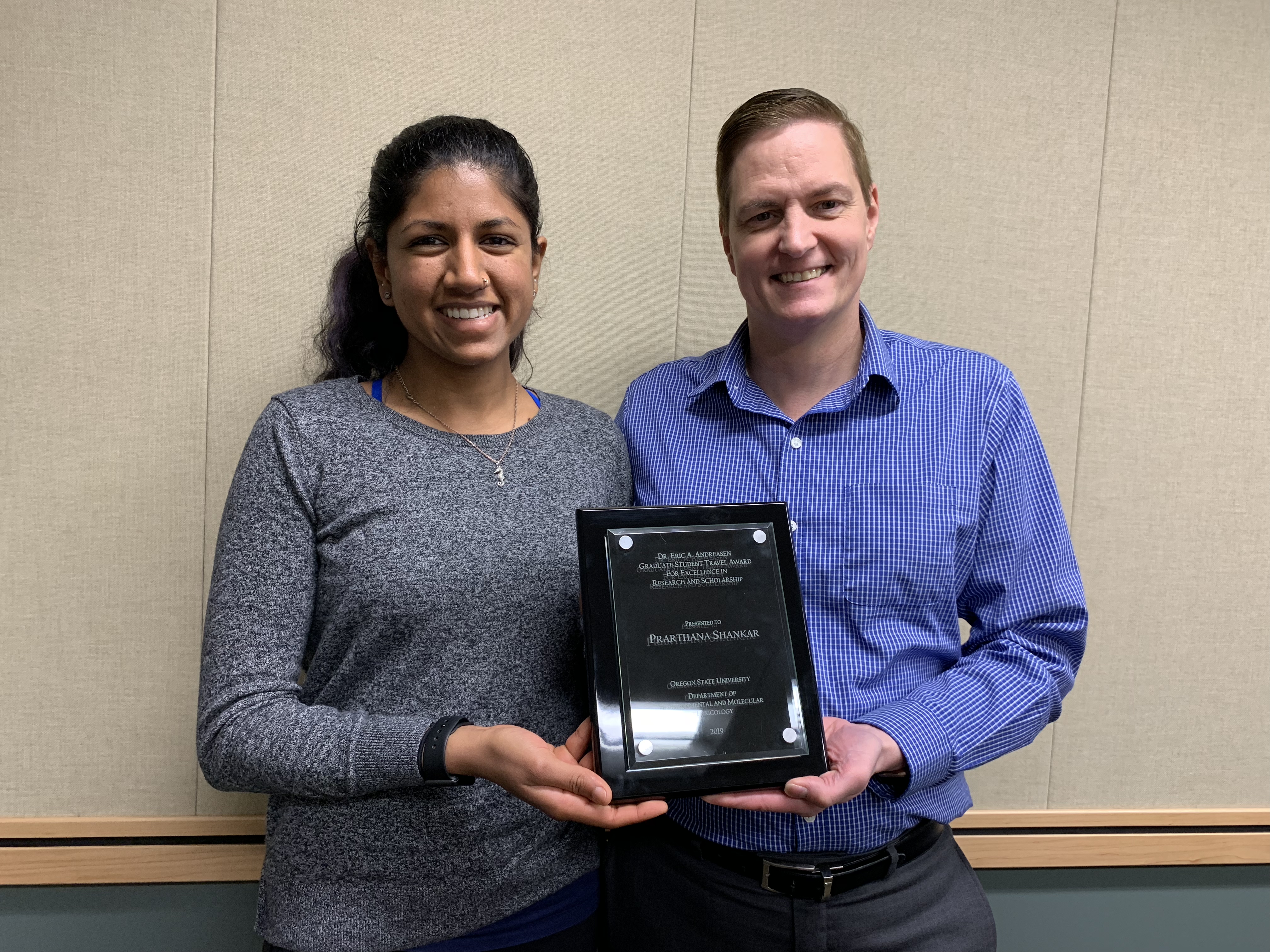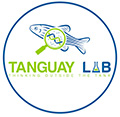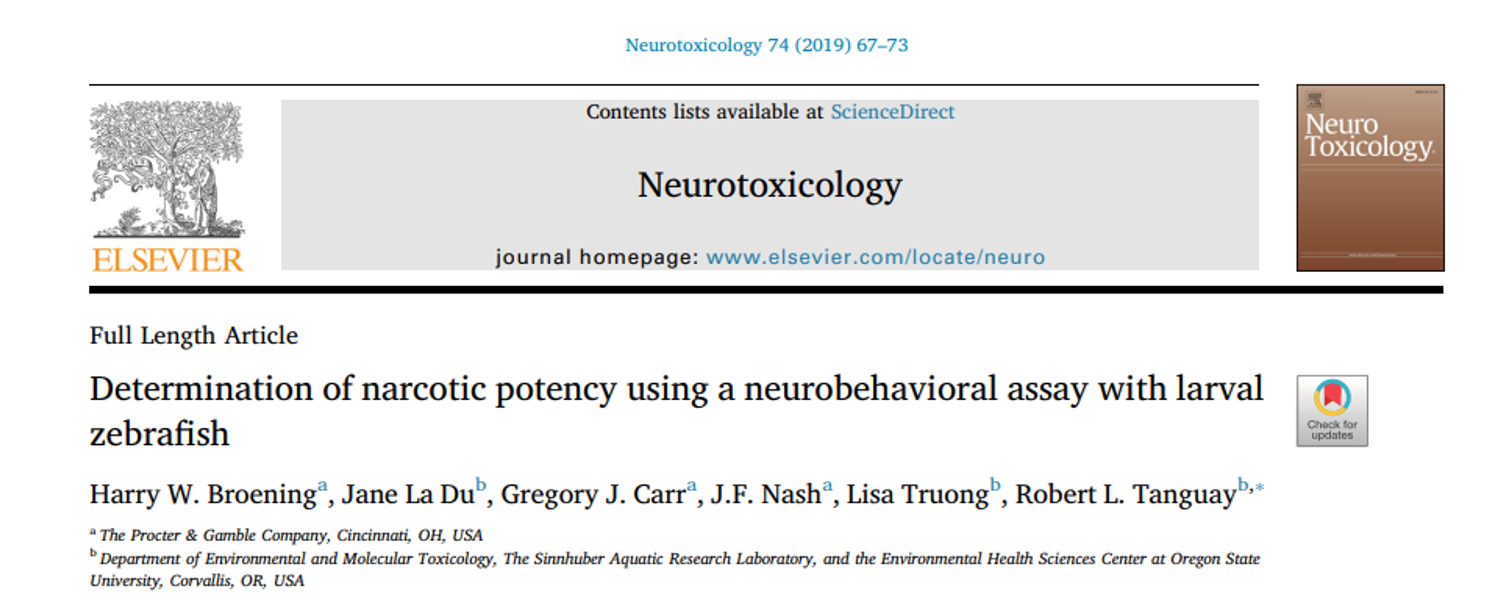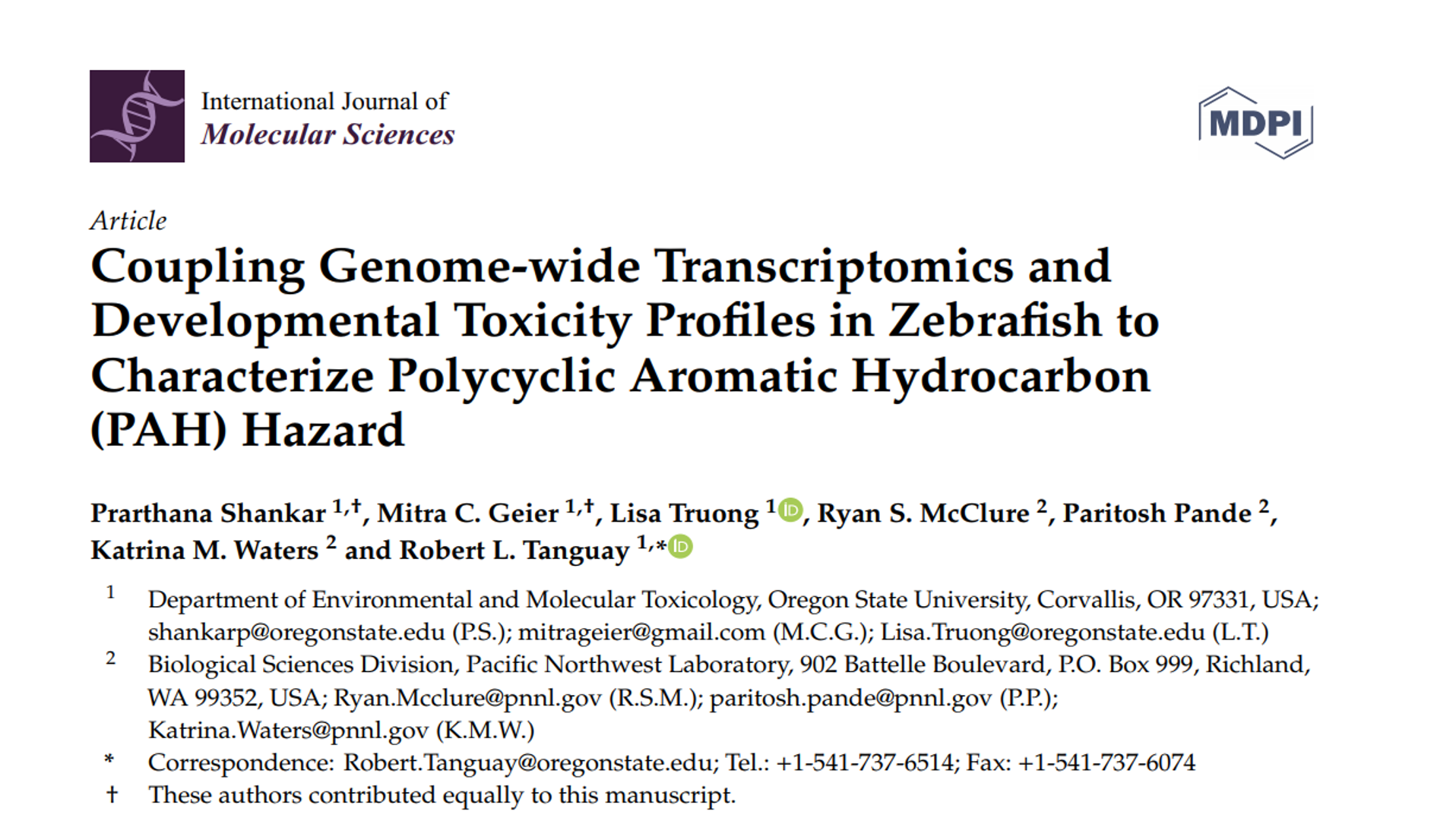Our collaborative manuscript with Proctor and Gamble is now available online!
Author: tanguay_admin
Congrats to Prarthana Shankar for authoring her first manuscript!
News report about receiving the EPA grant!
Tanguay Awarded 1.98 Million for 3 years from the US EPA to study the understanding of per- and polyfluoroalkyl substances (PFAs) in the environment
EPA Awards $3.9 Million to Research PFAS Challenges, Reducing Health Impacts
Contact Information:
WASHINGTON – Today, the U.S. Environmental Protection Agency (EPA) is awarding approximately $3.9 million through two grants for research that improves understanding of human and ecological exposure to per– and polyfluoroalkyl substances (PFAS) in the environment. This research is expected to help provide additional information about PFAS to federal, state, tribal, and local officials, as they work together to address these chemicals and protect public health. The research will also promote a greater awareness of how to restore water quality in PFAS-impacted communities.
“These grants will help fulfill a key goal in EPA’s PFAS Action Plan: strengthening science and research in order to better understand the characteristics and impacts of PFAS,” said EPA Administrator Andrew Wheeler. “This funding will also help researchers develop new strategies to further protect our communities and environment from harmful PFAS exposure.”
PFAS are a large group of synthetic chemicals that have been in use since the 1940s. PFAS are found in a wide variety of consumer and industrial products. PFAS manufacturing and processing facilities, facilities using PFAS in production of other products, airports, and military installations are some of the potential contributors to PFAS releases into the air, soil and water. Due to its widespread use and persistence in the environment, most people in the United States have been exposed to PFAS. There is evidence that continued exposure above specific levels to certain PFAS may lead to adverse health effects.
The following universities are receiving grants:
- Colorado School of Mines, Golden, Colorado, to research the fate, transport, bioaccumulation, and exposure of a diverse suite of PFAS in nationally representative PFAS impacted communities.
- Oregon State University, Corvallis, Oregon, to study the toxicity of a large collection of PFAS and PFAS mixtures with the zebrafish assay and mice studies to identify toxic PFAS that require prioritization for risk management.
These grants support ongoing Agency efforts related to PFAS—most notably, EPA’s PFAS Action Plan, which includes a long-term research approach to understanding and reducing the potential human health and environmental risks associated with PFAS.
Learn more on the grant funding at https://cfpub.epa.gov/ncer_abstracts/index.cfm/fuseaction/recipients.display/rfa_id/640/records_per_page/ALL
Learn more on PFAS at https://www.epa.gov/pfas.
Prarthana Shankar Selected For A Student Travel Award for the 2019 Teratology Society Annual Meeting
Prarthana Shankar Selected For A Student Travel Award for the 2019 Teratology Society Annual Meeting!
Check out the newest publication on “Systematic determination of the relationship between nanoparticle core diameter and toxicity for a series of structurally analogous gold nanoparticles in zebrafish”
Congratulation to Prarthana Shankar for being awarded the Dr. Eric Andreasen Graduate Student Award!
Prarthana Shankar was awarded the prestigious Dr. Eric Andreasen Graduate Student Travel Award 2019!
https://emt.oregonstate.edu/emt/andreasen-menu

New NIEHS R01 Award: “DEFINING THE DEVELOPMENTAL AND TOXICOLOGICAL ROLES OF THE AHR-REGULATED SOX9 LNCRNA IN ZEBRAFISH”
Dr. Tanguay was awarded a 5 year R01 award from NIEHS.
PROJECT SUMMARY/ABSTRACT The aryl hydrocarbon receptor (AHR) is required for proper vertebrate development and is activated by a diverse group of chemicals including common pollutants such as chlorinated dioxins, polycyclic aromatic hydrocarbons (PAHs), and coplanar polychlorinated biphenyls. In vertebrates, exposure to chemicals that activate the AHR during early life stages is associated with adverse birth outcomes and impaired neurodevelopment; however, the signaling events downstream of AHR and the genes contributing to toxic responses remain largely unknown. Our long-term goal is to decipher conserved AHR-mediated biological responses via discovery and validation of the causal genes and signaling mechanisms involved in AHR regulated developmental and toxicological processes. We previously identified a novel and phylogenetically conserved long non-coding RNA (slincR) that is induced by multiple environmentally relevant AHR ligands. SlincR is required for the AHR-induced repression of sox9b, a master regulator of cartilage development, and plays a causal role in AHR-mediated hemorrhaging and cartilage defects. The objective of this proposal is to identify the developmental and toxicological roles of the AHR-regulated lncRNA, slincR, in zebrafish. The central hypothesis is that slincR is a critical AHR-downstream signaling factor potentiating adverse developmental responses to diverse xenobiotic chemicals. Our rationale is that understanding how slincR functions and what other factors it interacts with will deepen the understanding of AHR-signaling with the potential to uncover human therapeutic targets for AHR-related disease. We will test our hypothesis by performing loss- and gain-of-function studies to determine the in vivo role of slincR in AHR regulated developmental and toxicological processes (Aim 1). To understand the slincR structure-function relationship with AHR signaling, we will perform structure-mapping experiments and identify the slincR interacting proteins and genome-wide targets (Aim 2). We will use computational approaches to integrate the findings of Aims 1 & 2 into the construction of an AHR gene regulatory network, establishing a systems-level understanding of slincR in AHR-regulated biological processes (Aim 3). This contribution is significant as it will unravel the functional impact of AHR activation on slincR expression and provide a new paradigm for understanding AHR-dependent cellular responses. The proposed research is innovative as we employ cutting-edge technologies new to the field of environmental health sciences. Our proposal will also help to describe a novel adverse outcome pathway (AOP) for dioxin-like AHR ligands that incorporate multiple biological levels including molecular structure, molecular interactions, co- regulated genes, signaling networks, tissue development and whole animal phenotypes. These studies will serve as a template for the systematic functional characterization of lncRNA potentiating biology and disease.
Our research was focused in Environmental Factor
The February issue of Environmental Factor has highlighted our paper on the research of using zebrafish for developmental neurotoxicity.
OSU EPYC processor highlighted in the Consumer Electronics Show
The Consumer Electronics Show highlighted the AMD EPYC processor line, in which the Tanguay lab new server is a part of! Check it out:


